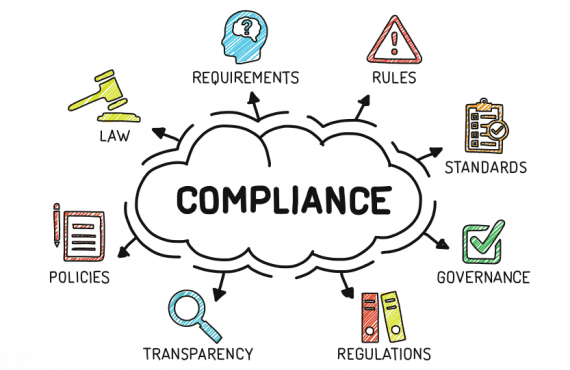CMS Emergency Preparedness Rule Implementation Deadline Is Fast Approaching
By: Louise Lindsey, B.S., M.A., D.Div. Editor, Med-Net Compliance, LLC
Wild fires and earthquakes in the west, tornadoes through the heartland, floods from rivers that overflow their banks and hurricanes striking the Atlantic and Gulf coasts are all nature’s calls for an emergency response. When you add to that man-made emergencies like gas leaks, petrochemical plant accidents and fires, train derailments with chemical spills and pollutants, terrorist attacks, and a myriad of other possibilities, the reasoning and need behind the Centers for Medicare & Medicaid Services (CMS) Emergency Preparedness Rule is understandable-albeit a formidable task for healthcare providers and suppliers.
CMS recently published the final Emergency Preparedness Rule (EPR) on September 16, 2016, with an effective date of November 15, 2016, and an implementation date of November 15, 2017. It may seem that there is plenty of time for healthcare providers to get their plans in place; but, in actuality, there is only about 6 months to go. The goal of the plan is to help skilled long-term facilities and other healthcare providers and suppliers be better prepared to face emergency situations. The new rule requires CMS licensed and/or certified providers to plan for natural and man-made disasters and to coordinate with federal, state, tribal regional and local emergency preparedness systems to ensure that facilities are sufficiently prepared to meet the needs of their residents, patients and clients during disasters and emergency situations.
The EPR requires affected groups to implement an emergency plan that is created using risk assessment and an “all-hazards” approach. What this means is that planning does not require specific plans for every possible threat; instead, planning ought to be aimed at developing a plan with the capacity to deal with a broad range of emergencies. The EPR covers 17 different provider and supplier types, and has incorporated variations in the requirements to take into account the differing needs of the provider or supplier type and the individuals for whom they provide healthcare services. The requirement for long-term care facilities is comparable to the obligations placed on hospitals.
The EPR requires a long term care (LTC) provider to meet “four core elements” in developing their emergency preparedness plan. They include these components:
Emergency Plan (Risk Assessment and Planning),
Policies and Procedures,
Communication Plan, and
Training and Testing Program.
Emergency Plan (Risk Assessment and Planning)
An LTC provider must develop and maintain an emergency preparedness plan that is reviewed and updated at least annually and meets all of these criteria:
Use an all hazards approach that includes missing residents and is documented and built on a facility-based and community-based risk assessment.
Include methods to deal with situations pinpointed in the risk assessment.
Deal with the resident population that includes at-risk persons; what kinds of services the LTC provider can offer in an emergency; and the non-interruption of operations that includes plans on how authority and succession will be handled.
Include a procedure to ensure appropriate contact, cooperation and collaboration with local, tribal, regional, State and Federal emergency preparedness officials.
Policies and Procedures
The emergency preparedness policies and procedures based upon the emergency plan just described must be reviewed annually and cover the following:
Provide for the survival basics of staff and residents, whether it involves an evacuation or a “shelter in place” situation. These will consist of:
o Food, water medical and pharmaceutical supplies,
o Sources of energy to maintain and protect the health and safety of residents,
o Emergency lighting,
o Protection against fires, and
o Sewage and waste disposal.
Location tracking system of on-duty staff and residents whether sheltered or re-located,
Means of safe evacuation from the LTC facility,
A way to “shelter in place” for residents, staff and volunteers remaining in the facility,
Method of preserving resident information in a confidential and secure way,
How volunteers or other emergency staff will be used including State and Federal healthcare professionals,
Develop contingencies with other facilities to receive residents should the need to move the residents arise.
Communication Planning
The LTC provider needs to create and maintain an emergency preparedness communication plan compliant with all levels of law enforcement, and it needs to be updated and reviewed on an annual basis. The communication plan should include the following:
Names of staff, service providers, resident’s physicians, volunteers and other LTC facilities.
Information on how to contact all levels (Federal, State, local, etc.) emergency preparedness staff, the State licensing and certification agency, State long-term care ombudsman, and other assistance sources.
Primary and alternate ways of communicating with the facility’s staff and all levels of emergency management agencies.
Way of sharing residents’ information and medical documentation with other healthcare providers, if necessary, to maintain continuity of care.
A method of releasing residents’ information in the event of an evacuation.
A method of providing information about the residents’ condition, location and care.
Training and Testing
The LTC provider must develop and maintain an emergency preparedness training and testing program that is congruent with the emergency plan, the policies and procedures, and the communication plan; and, it must also be annually evaluated and updated.
There are numerous other details involved with developing and maintaining a comprehensive emergency contingency plan that meets the detailed requirements outlined by the CMS. Hopefully, most LTC facilities are well on their way to completing their Emergency Plans. If not, perhaps looking at what is covered in this article will provide sufficient impetus to realize that six months will pass very quickly, and it is not a really long time from now. There is a great deal of helpful information and guidance that can be found on the CMS website at:
https://www.cms.gov/Medicare/Provider-Enrollment-and-Certification/SurveyCertEmergPrep/Emergency-Prep-Rule.html
Also, this website has a number of helpful tools and resources:
https://asprtracie.hhs.gov/cmsrule
For more information regarding this article, call 609-454-5020 or email info@mednetconcepts.com.












































